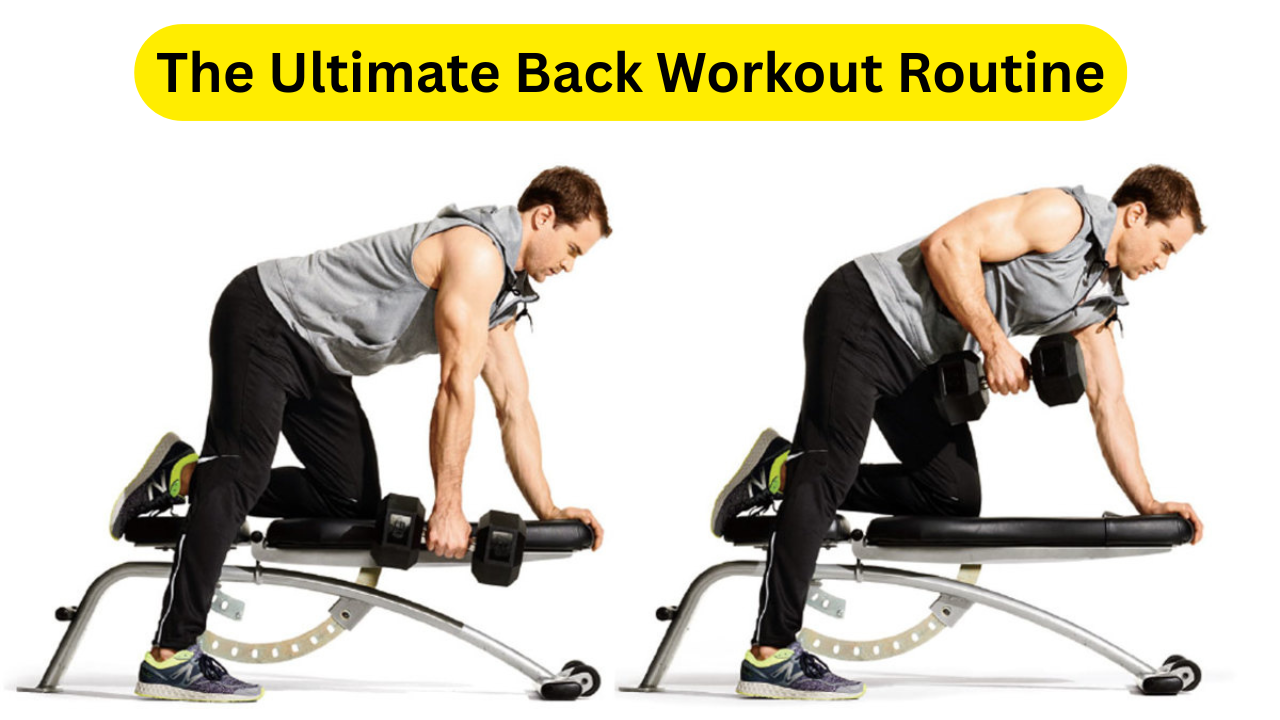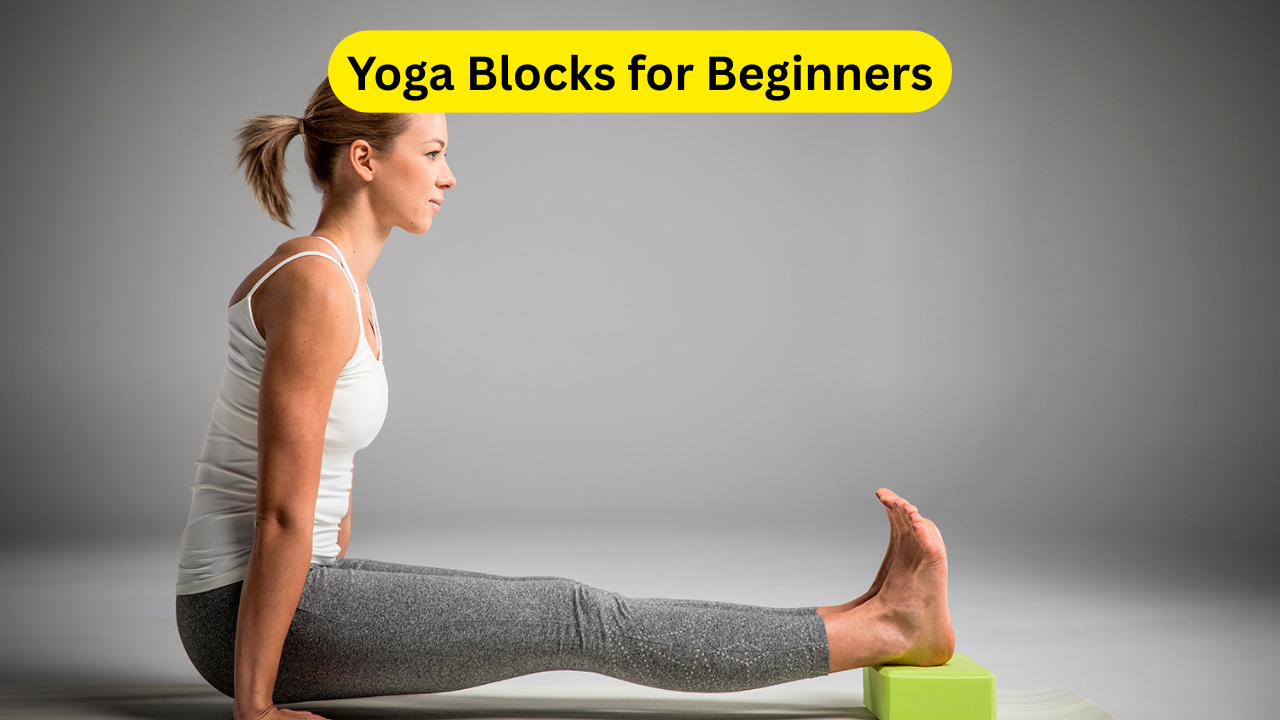The Ultimate Back Workout Routine: When it comes to building a powerful physique, a strong and well-developed back is non-negotiable. The back is one of the largest and most complex muscle groups in the body, responsible for posture, pulling strength, and overall balance. Whether you’re a beginner or an advanced lifter, incorporating a strategic back workout routine not only enhances upper body aesthetics but also plays a vital role in injury prevention and overall strength improvement.
A great back workout should target all major muscles, including the latissimus dorsi (lats), trapezius (traps), rhomboids, and erector spinae. Compound movements like deadlifts and rows are foundational, while isolation exercises help in refining muscle detail and symmetry. A structured back workout routine can be performed 1-2 times per week depending on your fitness goals and recovery rate.
This guide dives deep into the best back exercises, including High Pulls, Dumbbell Bent-Over Rows, Dumbbell Rows, and the Barbell Deadlift. We’ll also explore how to perform each movement correctly, benefits, target muscles, tips for improvement, and sample workout plans for all fitness levels.
Why Back Workouts Matter
1. Improved Posture and Stability
Regular back workouts strengthen the posterior chain, which includes muscles that support your spine. This leads to improved posture, reduced back pain, and better movement mechanics during other exercises.
2. Increased Strength and Performance
A strong back directly impacts your pulling movements—pull-ups, rows, and even your grip strength. It also plays a supporting role in squats, presses, and other compound lifts.
3. Balanced Muscle Development
Neglecting back muscles in favor of chest or arm workouts can lead to muscular imbalances. A comprehensive back workout ensures proportional development and prevents shoulder and neck issues.
Click here: Citroën C3 Électrique: A Game-Changer Under €16,000!
Top Back Exercises You Must Include
1. High Pull
Muscles Worked: Upper traps, deltoids, rhomboids, and lats
Equipment: Barbell or dumbbells
How to Perform:
- Stand with feet shoulder-width apart, holding the barbell or dumbbells in front of you.
- Bend slightly at the knees and hinge at the hips.
- Explosively pull the weight up to your chest, keeping elbows higher than the wrists.
- Lower the weight in a controlled manner.
Benefits:
- Builds explosive pulling power.
- Targets upper traps and shoulders.
- Great as a dynamic warm-up or power movement.
Pro Tip: Keep your core tight and avoid using your lower back to jerk the weight.
2. Dumbbell Bent-Over Rows
Muscles Worked: Lats, rhomboids, traps, biceps
Equipment: Dumbbells
How to Perform:
- Hold dumbbells in both hands, bend knees slightly, and lean forward at the hips.
- Keep back flat and head in line with your spine.
- Pull the dumbbells towards your waist, squeezing shoulder blades together.
- Lower the dumbbells slowly.
Benefits:
- Improves thickness in the upper and middle back.
- Enhances grip and forearm strength.
- Balances strength between sides of the body.
Pro Tip: Keep your elbows close to your body for maximum lat activation.
3. Dumbbell Rows (Single-Arm)
Muscles Worked: Lats, biceps, rear deltoids
Equipment: Bench, Dumbbell
How to Perform:
- Place one knee and hand on a flat bench.
- Hold a dumbbell in the opposite hand.
- Pull the dumbbell towards your hip, squeezing the lat at the top.
- Lower slowly and repeat.
Benefits:
- Isolates lats for unilateral strength.
- Corrects muscular imbalances.
- Improves mind-muscle connection.
Pro Tip: Avoid rotating your torso—keep the movement strict and controlled.
4. Barbell Deadlifts
Muscles Worked: Erector spinae, glutes, hamstrings, lats, traps
Equipment: Barbell
How to Perform:
- Stand with your mid-foot under the barbell, feet hip-width apart.
- Bend at the hips and grip the bar outside your knees.
- Engage your core, lift your chest, and drive through your heels.
- Stand tall, then return the bar to the floor in a controlled motion.
Benefits:
- Total-body strength builder.
- Boosts testosterone and growth hormone levels.
- Strengthens the entire posterior chain.
Pro Tip: Don’t round your back—maintain a neutral spine throughout the lift.
Complete Back Workout Routine (All Levels)
| Exercise | Sets | Reps | Rest |
|---|---|---|---|
| Barbell Deadlifts | 4 | 6-8 | 2 mins |
| Dumbbell Bent-Over Rows | 3 | 10-12 | 60 secs |
| Dumbbell Rows (Single) | 3 | 10/side | 45 secs |
| High Pull | 3 | 12-15 | 60 secs |
Optional Add-ons:
- Pull-ups (Bodyweight): 3 sets of max reps
- Face pulls (Cable): 3 sets of 15 reps
Tips for an Effective Back Workout
- Warm-Up First: Always do dynamic warm-up exercises like arm circles, band pull-aparts, and light rowing.
- Focus on Form: Sacrificing form for weight will lead to injury. Start light and progress gradually.
- Mind-Muscle Connection: Visualize your back muscles contracting during each rep.
- Track Progress: Keep a log of weights, reps, and rest times to track improvements.
- Recovery Matters: Get adequate sleep and nutrition for optimal muscle growth and repair.
Common Mistakes to Avoid
- Using Momentum: Swinging weights reduces muscle engagement.
- Neglecting Lower Back: Avoid undertraining spinal erectors.
- Lack of Variety: Mix up grips, angles, and equipment to hit all parts of the back.
- Overtraining: The back is a large muscle group but still needs proper rest.
- Ignoring Core Strength: A weak core can compromise back lifts.
Nutrition for Back Muscle Growth
- Protein Intake: Aim for 1.6–2.2g/kg body weight.
- Complex Carbs: Fuel your workouts with oats, rice, sweet potatoes.
- Healthy Fats: Include avocados, nuts, and olive oil.
- Hydration: Drink at least 3–4 liters of water daily.
- Supplements: Creatine, whey protein, and BCAAs may support muscle recovery.
Also read: Brutal Fitness Truth: Why You Should Eat All the Fruits You Want

The Ultimate Back Workout Routine Conclusion
Back training is often underestimated but remains one of the most crucial aspects of a complete fitness routine. A strong and sculpted back not only enhances your overall aesthetic but also supports other compound movements and daily posture. Exercises like High Pulls, Dumbbell Rows, and Deadlifts are powerful tools in your arsenal that work various muscles simultaneously, providing both size and strength gains.
The key to back development lies in consistency, correct technique, and structured programming. By progressively overloading the muscles and keeping your form tight, you’ll see noticeable improvements in a matter of weeks. Don’t forget the importance of recovery—rest days and good nutrition are just as crucial as the workouts themselves.
Everyone starts somewhere, and even if you’re a beginner, incorporating the exercises mentioned above with proper form and intensity can bring dramatic improvements. Over time, you’ll not only build a stronger back but also notice better posture, fewer injuries, and more confidence in your lifts.
Whether you train at home or in the gym, the principles remain the same—target all areas of the back with a mix of compound and isolation movements. With dedication, every rep brings you closer to a more powerful and resilient physique.
Back workouts can transform your fitness journey if done correctly. Now is the time to take your training seriously and aim for long-term progress. Stay committed, stay safe, and never compromise on technique for weight. The results will speak for themselves.
The Ultimate Back Workout Routine FAQs
1. How many times per week should I train my back?
You should train your back 1 to 2 times per week depending on your goals and recovery. Beginners may benefit from once a week, while advanced lifters might split their back into upper and lower sessions twice a week.
2. Are dumbbell rows better than barbell rows?
Both have unique benefits. Dumbbell rows allow for a greater range of motion and help correct imbalances, while barbell rows are excellent for building overall thickness and strength. Incorporating both ensures comprehensive development.
3. Can I build back muscles at home without a gym?
Yes, you can use resistance bands, bodyweight exercises like pull-ups or inverted rows, and dumbbells to build back muscles at home. Proper form and progressive overload are key to results.
4. What’s the best exercise for back thickness?
Barbell rows and deadlifts are excellent for back thickness. These compound lifts engage the entire back, particularly the middle and lower traps, rhomboids, and erector spinae.
5. Should I include pull-ups in every back workout?
Pull-ups are highly effective, especially for lat development. While you don’t need to do them in every session, including them in most of your back workouts is recommended for balanced upper body strength.









